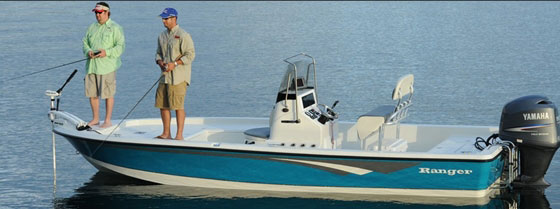Freshwater Fishing Boats
Should you buy an aluminum skiff, a bass boat, or a multi-species fishing machine? What does each have to offer?
Freshwater fishing boats come in all shapes and sizes, from small and simple Jon boats to snazzy bass boats that are juiced up with hundreds of horsepower. If you’re interested in buying a boat for fishing in sweetwater, you’ll have countless to choose from and many decisions to make. How do you get started sorting through the options? Never fear, dear boater—we’re here to help.

Specialized, or General Fishing?
The first decision you need to make is on just how specialized a boat you want. If you plan to spend your time bass fishing, period, then obviously you need a bass boat. But be aware of the fact that these are some of the most specialized fishing boats on the face of the planet. They’re designed for bass and bass alone, and if you hope to not only bass fish but also troll for walleye, fly cast for trout, and drift fish for crappie, a more versatile design is in order. Here’s a basic look at some of the specialized freshwater fishing boat types—and the more versatile ones—that you have to choose from.
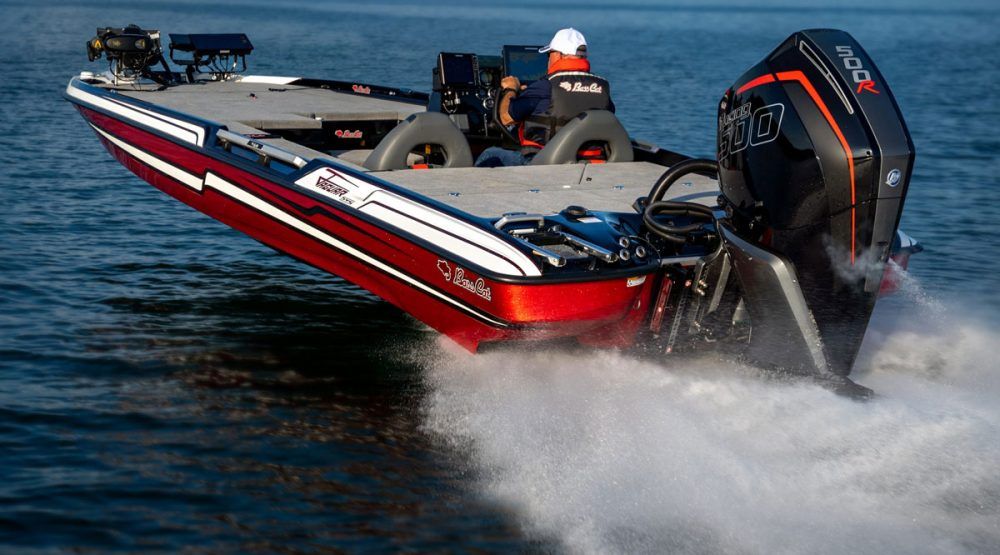
Bass Boats
- These are highly specialized, usually designed for bass fishing with just two people onboard, regardless of size. Most can accommodate a third angler, but three’s a crowd.
- They have powerful engines so you can beat the competition to the hotspot (read 10 Bass Boats that will Blow You Away: Cast Action Heroes to learn about some of the more impressive models, including some that break 100 MPH). These may take a good amount of skill to drive—many are inappropriate for beginners.
- They have low sides to reduce windage, allow unrestricted casting, and make landing fish easy. But as a result, they aren’t the best choice for rough waters, nor for small children who may fall overboard easily.
- Top-end bass boats are extremely expensive, but there are also some very affordable bass boats out there.
Read some bass boat reviews.
See bass boats for sale on boats.com.
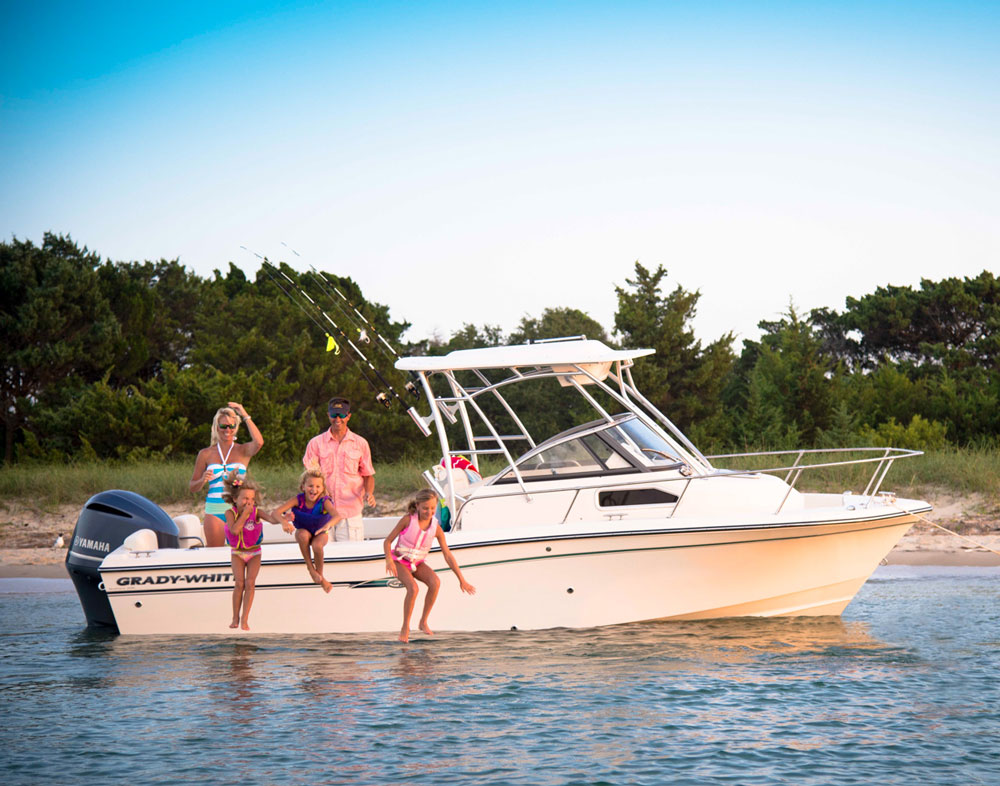
Cuddy Cabin Boats
- Usually found on larger bodies of freshwater, the cabin on the bow of a cuddy boat boats gives you vastly more protection from the weather and makes “weekending” an option.
- Having a cabin almost always means having a head.
- Having a cabin in the bow cuts into your fishing space, as well as your usable deck space. As a result they’re rarely the top pick for those exclusively interested in angling.
- Cuddy boats tend to be significantly more expensive than open boats of the same size.
- Most boats large enough to support a cabin are also large enough to use in open waters, even if it’s a bit rough.
See some cuddy cabin boat reviews.
Check out cuddy cabin boats for sale on boats.com.
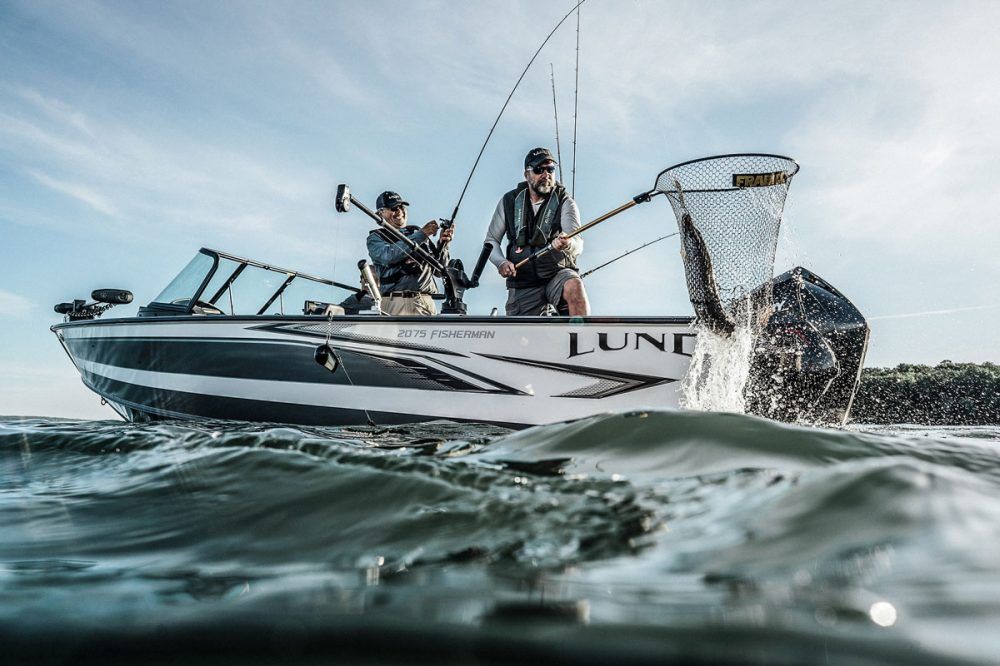
Dual Console and Side Console Boats
- Often called “multi-species boats” when designed specifically for freshwater fishing, these are highly versatile craft which are generally designed to take on a wide range of conditions, allowing you to fish in everything from small rivers and lakes to wide-open waters.
- Depending on size, this design can accommodate up to a half-dozen anglers.
- They’re available in a wide range of sizes with all sorts of power options, and no matter what your budget is, there’s probably a dual or side console freshwater fishing boat you can afford.
- They have higher sides and most offer a significant amount of protection. Cold-weather boaters will want to look at those with full windshields on both the driver’s and passenger’s sides.
Read some reviews of dual and side console boats, or dig deeper by reading Dual Console Boats: the Good, the Bad, and the Ugly.
See pertinent dual and side console freshwater fishing boats for sale on boats.com.
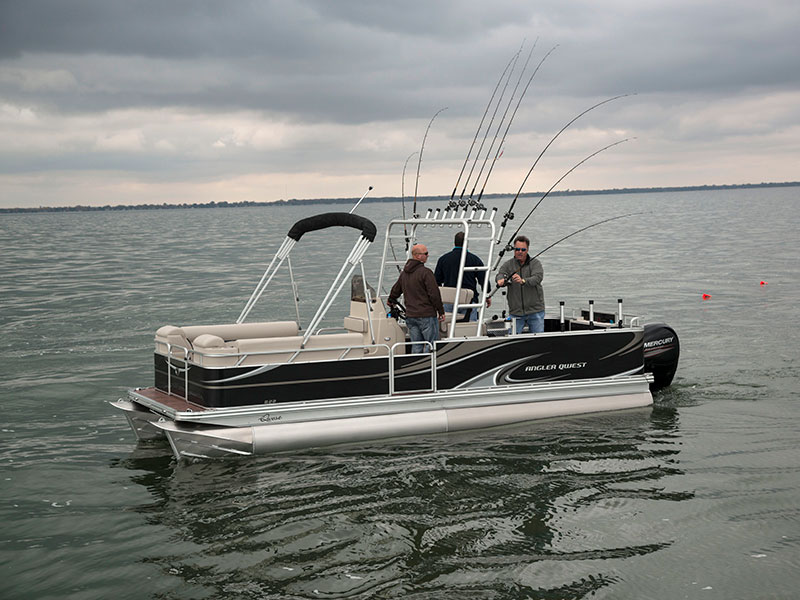
Pontoon Boats
- Although they may not be the first type of boat to come to mind when you think of fishing, pontoons make excellent platforms for a wide range of angling situations and there are plenty of pontoon boats designed specifically for fishing. Excellent stability and gobs of deck space make them a good choice for social anglers who plan to invite lots of friends.
- Fences encircling the deck make these ideal for having children aboard.
- Though they aren’t the best choice for rough waters, they’re capable of handling most conditions in open bodies of water as long as you pick your days wisely.
- Most have Bimini tops and pop-up head compartments, which boost the comfort level of everyone aboard.
- Prices run the gamut, as do size and power options.
See some of our many pontoon boat reviews.
View pontoon boats for sale on boats.com.
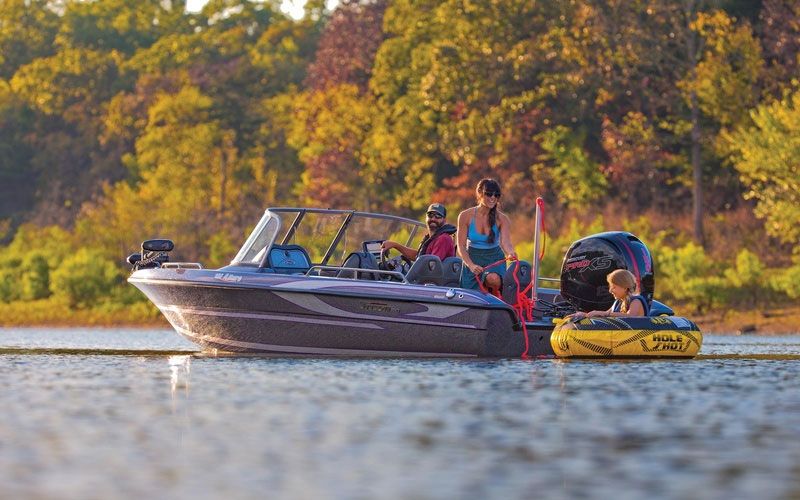
Ski and Fish
- This type of boat is designed for the family boater who wants to take the kids fishing one weekend, and take them waterskiing or wakeboarding the next.
- Most offer jazzy performance, and medium to high horsepower.
- Although they’re good for both fishing and watersports, they’re not ideal for either. Trade-offs have to be made (such as slimming down livewells to make room for a ski towing post, or giving up board racks to make room for rodholders) to allow for the versatility.
- Since they tend to have a large number of features, and place more emphasis on looks and performance than many other fishing boats, they aren’t the least-expensive choice. Plus, the large number of optional features they usually offer can make figuring out the “real” price difficult when buying one new.
See Ski and Fish boat reviews.
See Ski and Fish boats for sale on boats.com.
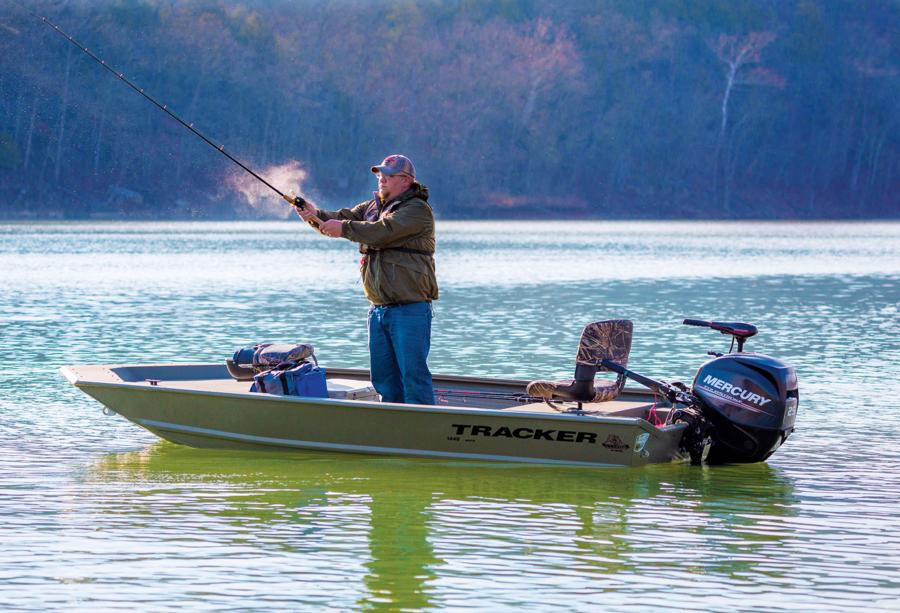
Skiffs and Jon Boats
- This type of boat is as simple as it gets; although some are spiced up with features, the basic concept of a skiff is to offer a small, wide-open fishing platform.
- Since they’re usually (though not always) on the small side, skiffs aren’t commonly chosen by those venturing into large bodies of water in various weather conditions.
- Expect to find few creature-comforts, and little protection from the sun and weather.
- Thanks to their simple design, skiffs and Jon boats are some of the most affordable boats around. In fact, some small jon boats can be purchased without power for under $1,000. And once you purchase a skiff, there’s little to break or go wrong. That keeps long-term maintenance costs extremely low.
- Their light weight makes skiffs easy to trailer, even for the smallest tow vehicles.
Read reviews of skiffs.
See some surprisingly affordable skiffs and jon boats for sale on boats.com.
Aluminum Freshwater Fishing Boats Versus Fiberglass Freshwater Fishing Boats
Now that you have a boat type picked out, it’s time to decide if aluminum or fiberglass is the better choice for you. This can be a very, very tough call—but we have a system all worked out that will help. Scroll down a bit, and you’ll see tables listing some important pros and cons for each material. Feel free to print ‘em out, and mark ‘em up with a pen. Then, as you consider each pro and con, rank them from 1 to 10 as reflects your personal value for each. Total up the results, and you should have some new-found clarity as you consider whether to look at aluminum or fiberglass boats.
| Aluminum | |||
| ALUMINUM PRO | Value | ALUMINUM CON | Value |
| Light weight means it's easy to trailer, load, and launch | +____ | Light weight means it gets blown around easily, making drift fishing tough in a breeze | -____ |
| Comparatively inexpensive, and requires relatively small powerplants | +____ | Doesn't look as sharp as fiberglass | -____ |
| Low maintenance; you can run it hard and put it away wet | +____ | Bounces around a lot in choppy waves | -____ |
| Lower maintenance and operating costs than fiberglass | +____ | Often has wood structural components which could rot | -____ |
| Dents instead of shattering on hard impacts | +____ | Rarely offers speeds and handling as good as a fiberglass boat (which often has higher power ratings) | -____ |
| If you're considering a pontoon or jon boat, virtually all are built of aluminum | +____ | Usually has fewer built-in accoutrements, and very few have self-bailing cockpits | -____ |
| SCORES | +____ - ____ = FINAL SCORE ____ | ||
| Fiberglass | |||
| FIBERGLASS PRO | Value | FIBERGLASS CON | Value |
| Beefier, so it handles the seas better, bounces around less in a chop, and has a slower drift | +____ | Heavier weight means you may need a larger tow vehicle | -____ |
| Can have more complex molded-in hull designs (such as a flared bow for a drier ride, tunnel hulls for shallower draft, etc.) | +____ | More expensive to buy, maintain, and operate | -____ |
| Can often be powered-up to higher horsepower for faster speeds and a better hole-shot | +____ | Requires more washing and waxing than aluminum | -____ |
| Often has more molded-in seating, stowage compartments, and creature comforts (such as head compartments inside consoles) | +____ | Hard impacts usually result in significant damage, which is expensive to fix | -____ |
| If you want a cabin, there are far more options available than on aluminum boats | +____ | If not well-maintained, fiberglass boats tend to loose their good looks and devalue more quickly | -____ |
| Stern-drive power is more commonly offered than on aluminum | +____ | Molded liners often eliminate some interior volume | -____ |
| SCORES | +____ - ____ = FINAL SCORE ____ | ||
So, which came out on top, aluminum or fiberglass? Please don’t say it was a tie—in that case, you’re in for some serious soul-searching before you can make a decision. But there’s one more thing that might help: take a look at Aluminum Fishing Boats: Light, Economical, and Seaworthy. This article goes into some in-depth detail about aluminum fishing boats, and may push you one way or the other.
Power Choices
Even if you have your ideal freshwater fishing boat picked out, you’ll still have to grapple with what type of powerplant to get with it. Just how much power do you need? Could an electric powerplant be potent enough to get the job done? Maybe you should consider a jet drive?
Don’t worry, we have another article which addresses this question in detail: Outboards, Inboards, Pod Drives, Stern Drives, and Jets: Which is Best? Some of the information won’t apply (if you’re looking for a freshwater fishing boat chances are you won’t be too concerned with pod drives, for example), but most of your questions should get answered.
You’ve probably noticed that many freshwater fishing boats have a small trolling motor found on the bow. These are more for maneuvering while you fish, however, than they are for primary propulsion. Electric boat motors in larger sizes haven’t evolved nearly as quickly as those found in cars, and most are still on the expensive side, offer limited range, and are limited in size. The smaller models work great in relatively small lakes and ponds, but beyond that most aren’t very practical for fishermen. Still, there’s a good chance an electric motor of one type or another may be in your future, so get an in-depth look at them by reading Alternative Power: Outboards that are Gasoline-Free.
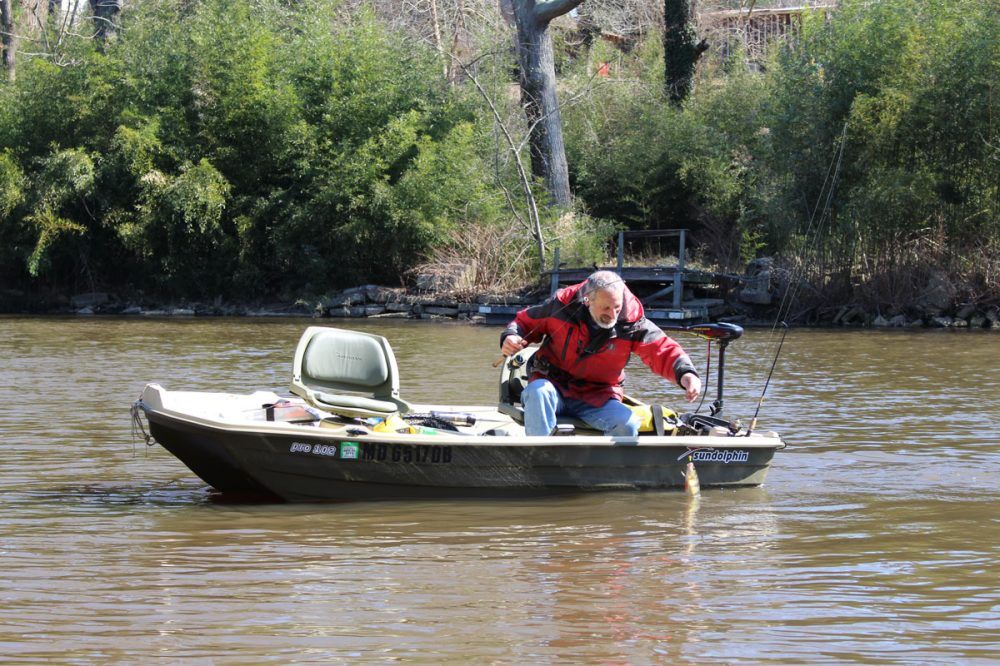
Whatever type of engine you choose, you’ll have to decide how much power is enough. Bear in mind that quite often, the base-model powerplant offered by the manufacturer would be considered insufficient by many boaters. But to keep that sticker price low, the manufacturer obviously wants to list the minimum size required. That minimum may be just fine when a boat sits unloaded, with just a person or two aboard. But when you fill the fuel tank, toss on all your gear, and invite a few friends along for the fishing trip, that same rig may not be able to get up to speed.
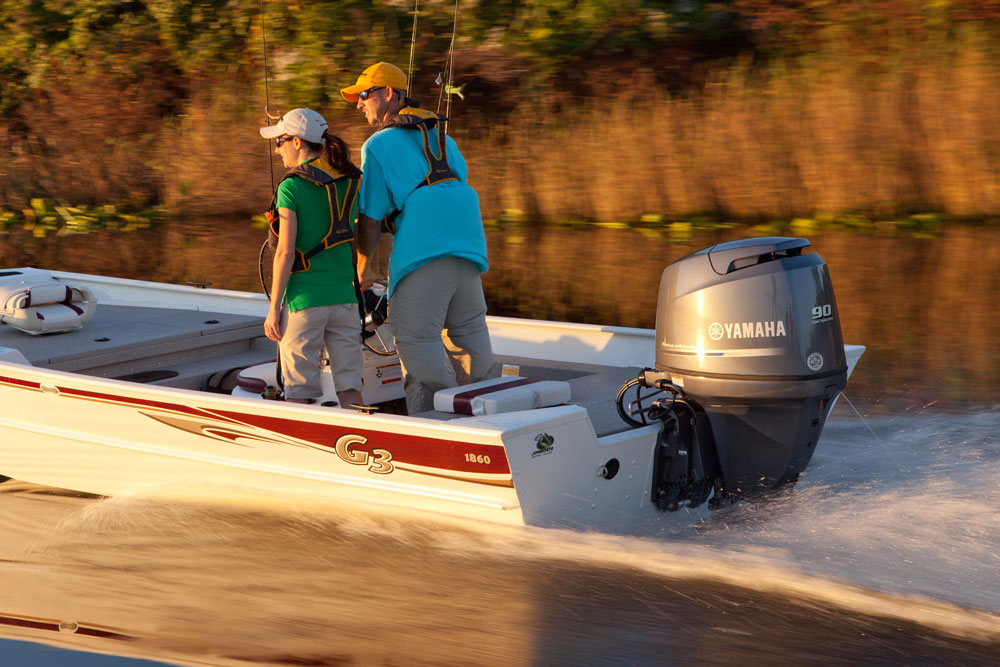
In some cases this isn't much of a concern. If you’re going to use your boat to fish in a small lake or reservoir, for example, you may not care to get above jogging speed. But as a general rule of thumb, it’s usually best to upgrade the powerplant by at least 10 or 20 percent over the boat’s base horsepower. This is an issue your dealer should be able to help you with, too. Most good dealers know from experience how a particular model they sell will run with a given sized engine, and ultimately they want you to be happy with your purchase, so the advice you get should be good.
One final consideration: resale value. While you may not care for gobs of horsepower, many other people do. It’s rarely difficult to resell a boat that’s equipped with the maximum-size engine, but it can be very tough to sell a boat that potential buyers see as under-powered.
Freshwater Fishing Boats, 101
Well fellow angler, we hope we’ve helped you sort through some of the options, choices, and challenges you have to deal with when picking out a new freshwater fishing boat. If you love boats anything like we do, then using the information in this article you’ll probably be able to sort through the hundreds of thousands of listings on boats.com and cut your list of contenders down to 10,000 or 20,000 options. Slowly, slowly, slowly, you’ll whittle away at them until only a few hundred remain. Then finally, after much deliberation, dwelling, and dreaming, you’ll pick out a winner and buy your freshwater fishing boat. Congratulations—what time should we meet you at the dock?
Editor's Note: This article was originally published in October 2015 and most recently updated in August 2024.















